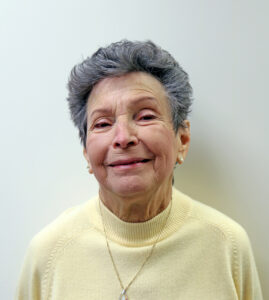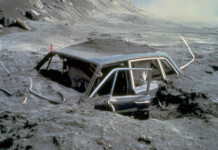
By Joan Koczor
Headache is one of the most common and debilitating pain conditions in the world. The World Health Organization names headache the third leading cause of disability in the world and the No. 1 cause of disability in individuals under age 50.
Headaches cause a heavy personal toll in terms of social life, family life, anxiety and depression due to fear of the next headache. They affect people of all races, ages and geographical location.
According to WebMD.com, older people have fewer headaches than younger ones, and migraines tend to disappear with age. At age 70, only 10 percent of women and 5 percent of men have migraines.
Headaches can be triggered by certain environmental factors shared in a family’s household, such as:
- Second-hand tobacco smoke
- Strong odors from household chemicals or perfumes
- Exposure to certain allergens
- Eating certain foods
Stress, pollution, noise, lighting and weather changes are other environmental factors that can trigger headaches for some people. Changes in humidity, temperature, storms, dry or dusty conditions can all trigger a headache.
Headaches in senior citizens may indicate something more serious. They can be symptoms of several conditions, including:
- Temporal arteritis
- Cerebrovascular disease
- Trigeminal neuralgia
- Head trauma
Primary headaches
Primary headaches are not the result of another medical condition. The category includes tension-type, migraine and cluster headaches.
Common triggers of tension-type headaches or migraine headaches include:
- Emotional stress related to family and friends, work or school
- Alcohol use
- Skipping meals
- Changes in sleep patterns
- Excessive medication use
- Tension
Iron deficiency anemia has also been linked to migraines, headaches and an increased predisposition to pain.
Ocular migraine is the most unusual and often misdiagnosed type of migraine. It can happen with or without a headache and is often characterized by visual loss, blind spots, zig-zag lines or seeing stars and floaters or black spots.
Cluster headaches are the most severe type of primary headache. The pain of a cluster headache is intense and has a burning or stabbing quality that is throbbing or constant.
Secondary headaches
Secondary headaches result from another medical or neurological condition and include sinus headaches and medication-overuse headaches.
Sinus headaches are associated with a deep and constant pain in the cheekbones, forehead or bridge of the nose. Medication overuse headaches occur as a result of the overuse of over-the-counter analgesics or prescribed painkillers such as opiates and sedative hypnotic tablets designed for headache management.
Advances in the medical management of headache mean relief is no longer just possible but probable. Although some form of head pain will occasionally visit most people, no one should have to live and suffer with headaches.
Joan Koczor is a senior advocate and a member of the Age-Friendly Maricopa Advisory Committee.
https://nationaldaycalendar.com/national-senior-citizens-day-august-21/
https://www.notjustbingo.com/activity-calendars/august-calendar.html.

![Senior Info/Expo draws hundreds Clinical Liason Elaina Young of Compassus Hospice and Palliative Care speaks with an attendee at the Senior Info/Expo at the Maricopa Library and Cultural Center on Jan. 20, 2024. [Monica D. Spencer]](https://www.inmaricopa.com/wp-content/uploads/2024/01/spencer-012024-senior-info-expo-web-01-218x150.jpg)




![He has the power: Weightlifter doesn’t let age or others’ opinions stand in his way Mack Hodges. [Bryan Mordt]](https://www.inmaricopa.com/wp-content/uploads/2023/08/BCM_8517-scaled-e1690992804625-218x150.jpg)





![Alleged car thief released without charges Phoenix police stop a stolen vehicle on April 20, 2024. [Facebook]](https://www.inmaricopa.com/wp-content/uploads/2024/04/IMG_5040-218x150.jpg)




![City gave new manager big low-interest home loan City Manager Ben Bitter speaks during a Chamber of Commerce event at Global Water Resources on April 11, 2024. Bitter discussed the current state of economic development in Maricopa, as well as hinting at lowering property tax rates again. [Monica D. Spencer]](https://www.inmaricopa.com/wp-content/uploads/2024/04/spencer-041124-ben-bitter-chamber-property-taxes-web-100x70.jpg)